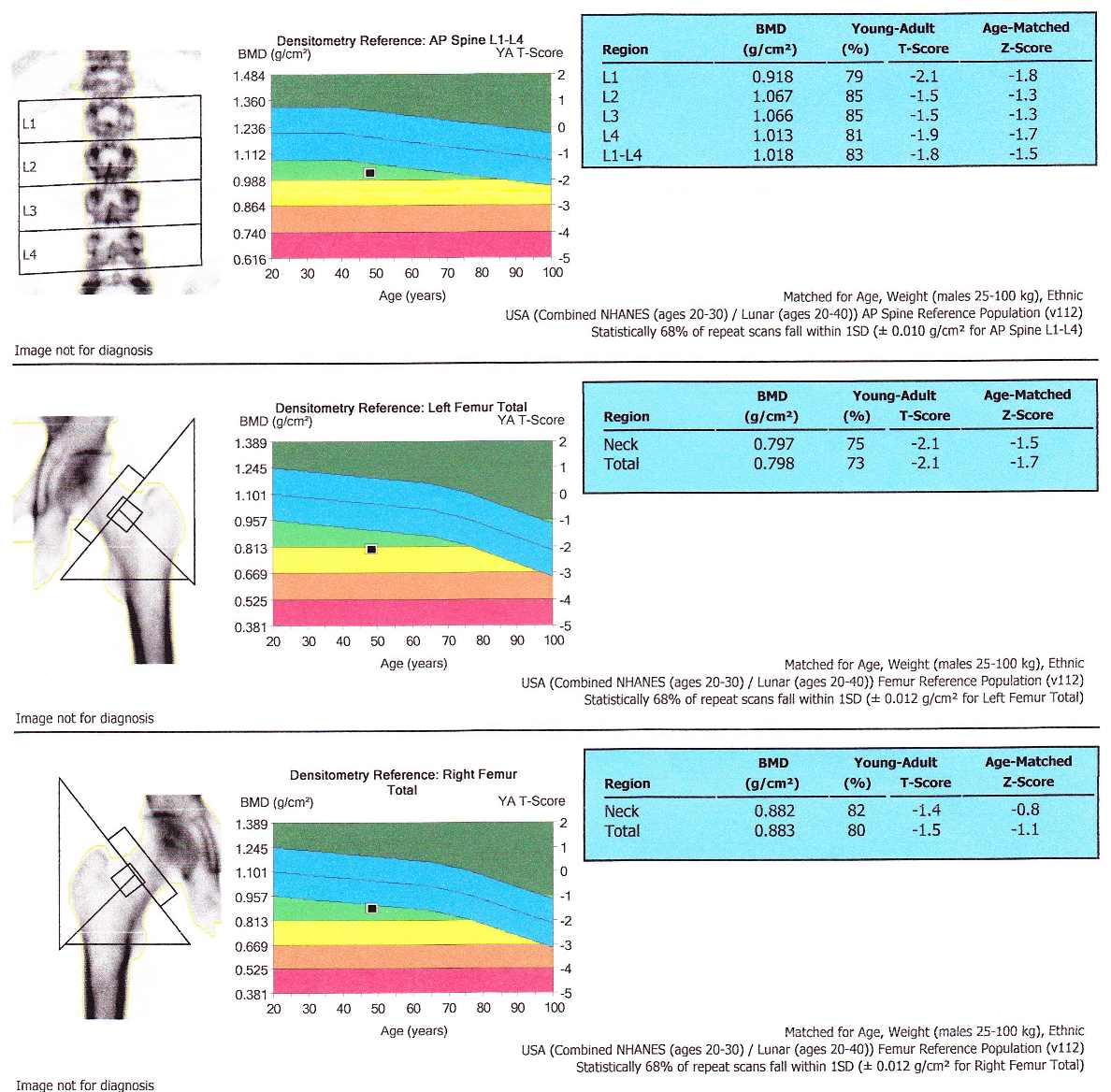

These tables, the Bayley-Pinneau tables, are included as an appendix in the Greulich and Pyle atlas. Separate tables are used for boys and girls because of the sex difference in timing of puberty, and slightly different percentages are used for children with unusually advanced or delayed bone maturation. By simple arithmetic, a predicted adult height can be computed from a child's height and bone age. Statistics have been compiled to indicate the percentage of height growth remaining at a given bone age. Several smartphone applications have been developed to facilitate the use of vertebral methods such as Easy Age. Hassel & Farman (1995) developed an index based on the second, third, and fourth cervical vertebrae (C2, C3, C4) and proved that atlas maturation was highly correlated with skeletal maturation of the hand-wrist.
#BONE DENSITY CHART BY AGE SERIES#
Lamparski (1972) utilized the cervical vertebrae and found them to be as reliable and valid as the hand-wrist area for assessing skeletal age. He developed a series of standards for assessment of skeletal age for both males and females. This method has the advantage of eliminating the need for an additional radiographic exposure since the vertebrae are already recorded on the lateral cephalometric radiographic. The hands of infants do not change much in the first year of life and if precise bone age assessment is desired, an x-ray of approximately half of the skeleton (a "hemiskeleton" view) may be obtained to assess some of the areas such as shoulders and pelvis which change more in infancy. Ī more complex method also based on hand x-rays is the "TW2" or the "TW3" method (TW = Tanner Whitehouse) method.Īn atlas based on knee maturation has also been compiled. The bones in the x-ray are compared to the bones of a standard atlas, usually "Greulich and Pyle". A hand is easily x-rayed with minimal radiation and shows many bones in a single view. The most commonly used method is based on a single x-ray of the left hand, fingers, and wrist.

X-ray of a hand, with automatic calculation of bone age by a computer software. These are interpreted by pediatric radiologists, physicians who are experts in using medical imaging for pediatric diagnosis and therapy. Pediatric endocrinologists frequently order bone age x-rays to evaluate children for advanced or delayed growth and physical development. A small amount of spinal growth concludes an adolescent's growth. As these cartilaginous zones become obliterated, the epiphyses are said to be " closed" and no further lengthening of the bones will occur. The remaining cartilaginous portions of the epiphyses become thinner.

As growth nears conclusion and attainment of adult height, bones begin to approach the size and shape of adult bones. As sex steroid levels rise during puberty, bone maturation accelerates. The other primary skeletal component of height is the spine and skull.Īs a child grows the epiphyses become calcified and appear on the x-rays, as do the carpal and tarsal bones of the hands and feet, separated on the x-rays by a layer of invisible cartilage where most of the growth is occurring. The long bones of the leg comprise nearly half of adult height. The long bones include the femurs, tibias, and fibulas of the lower limb, the humeri, radii, and ulnas of the upper limb (arm + forearm), and the phalanges of the fingers and toes. The long bones are those that grow primarily by elongation at an epiphysis at one end of the growing bone. Children who are below average height do not necessarily have a delayed bone age in fact their bone age could actually be advanced which if left untreated, will stunt their growth.Īt birth, only the metaphyses of the " long bones" are present. Those with advanced bone ages typically hit a growth spurt early on but stop growing sooner, while those with delayed bone ages hit their growth spurt later than normal. For most people, their bone age is the same as their biological age but for some individuals, their bone age is a couple of years older or younger. A child's current height and bone age can be used to predict adult height. The "bone age" of a child is the average age at which children reach various stages of bone maturation. These changes can be seen by x-ray techniques. As a person grows from fetal life through childhood, puberty, and finishes growth as a young adult, the bones of the skeleton change in size and shape. Bone age is the degree of maturation of a child's bones.


 0 kommentar(er)
0 kommentar(er)
